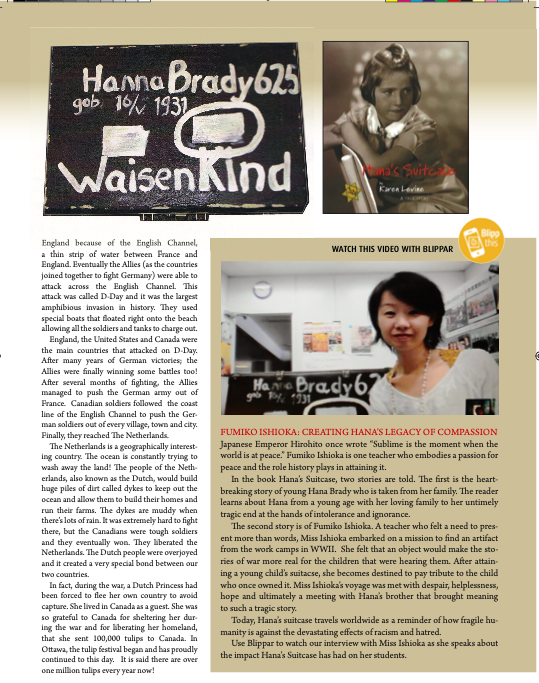Why the beautiful tulip symbolizes determination, spirit, and friendship during World War II.


If you have ever visited Canada’s capital city of Ottawa in the springtime you may have seen thousands and thousands of tulips flowering. There is an annual festival called Tulip Fest in Ottawa. The celebration began way back at the end of World War II. The tulips are symbolic of the gratitude that Holland shares with Canada since World War II. The war started in Europe in 1939 and lasted until 1945 (in fact it actually started earlier than that when Japan invaded China, but to keep it simple we’ll use the European dates). It was a tremendous conflict that involved many countries fighting on almost every continent on Earth. It was a terrible and sad time in human history. Despite all the awful things that war brings, sometimes some good can come out of it too. Technological advancements such as radar that helps modern jet airliners fly safely were developed during the war. Medical advancements and equality for women took long overdue steps forward as women filled in for all the jobs the fighting men had to leave behind. Everyone had to work together whether looking after the house and family, working in a factory or fighting in the war. It helped people overcome their old ideas and showed that equality was the right choice. We’re still not perfect, but much has changed since then.
Back in World War II, Germany had invaded and taken over Holland, along with most of the other countries in Europe. Many countries fought together to try to stop the attacks, but Germany had been planning for too long and its armies were strong. Eventually, Germany won. They took entire armies to their prisons or forced them to flee Europe. They escaped on boats to the safety of England.
Germany was never able to invade England because of the English Channel, a thin strip of water between France and England. Eventually, the Allies (as the countries joined together to fight Germany) were able to attack across the English Channel. This attack was called D-Day and it was the largest amphibious invasion in history. They used special boats that floated right onto the beach allowing all the soldiers and tanks to charge out.
England, the United States and Canada were the main countries that attacked on D-Day. After many years of German victories; the Allies were finally winning some battles too! After several months of fighting, the Allies managed to push the German army out of France. Canadian soldiers followed the coastline of the English Channel to push the German soldiers out of every village, town, and city. Finally, they reached The Netherlands.
The Netherlands is a geographically interesting country. The ocean is constantly trying to wash away the land! The people of the Neth- erlands, also known as the Dutch, would build huge piles of dirt called dykes to keep out the ocean and allow them to build their homes and run their farms. The dykes are muddy when there’s lots of rain. It was extremely hard to fight there, but the Canadians were tough soldiers and they eventually won. They liberated the Netherlands. The Dutch people were overjoyed and it created a very special bond between our two countries.
In fact, during the war, a Dutch Princess had been forced to flee her own country to avoid capture. She lived in Canada as a guest. She was so grateful to Canada for sheltering her during the war and for liberating her homeland, that she sent 100,000 tulips to Canada. In Ottawa, the tulip festival began and has proudly continued to this day. It is said there are over one million tulips every year now!
